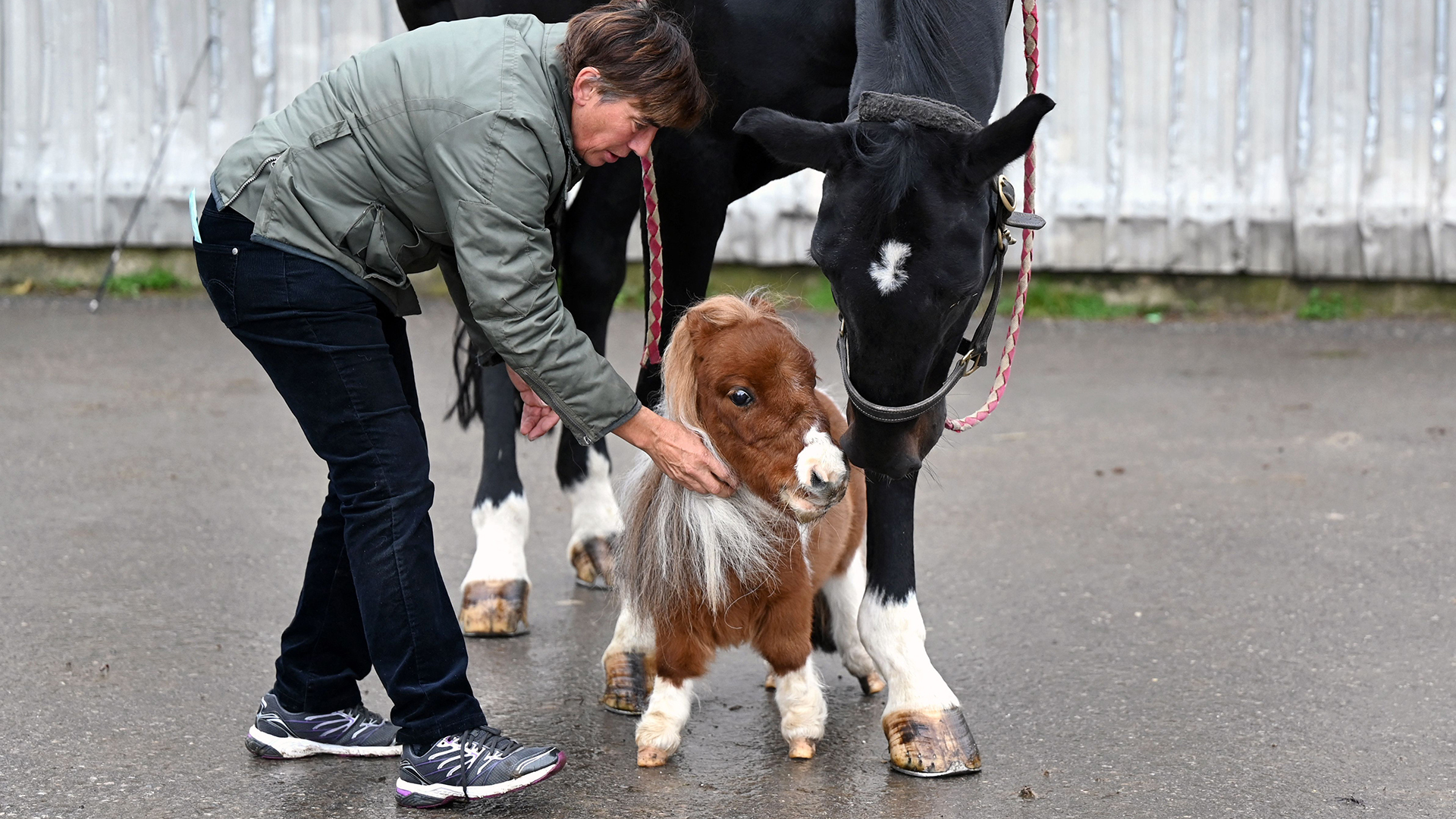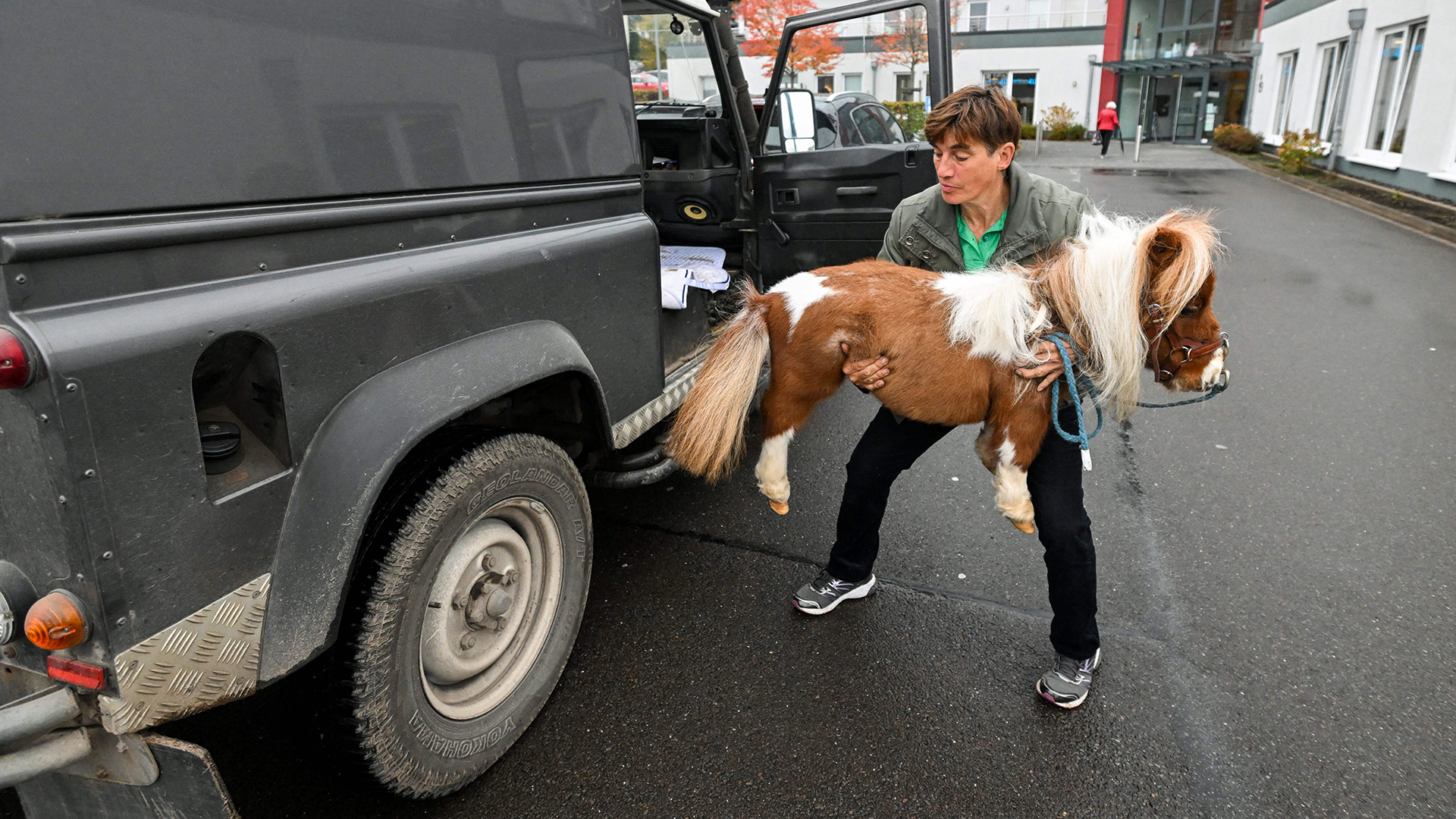20-inch pony left long-faced, must wait to be crowned world’s smallest horse
A 3-year-old male Shetland pony named Pumuckel has narrowly missed out on officially being named the world's smallest horse due to a technicality, but he’s likely to gallop off with the title next year.

A diminutive pony named Pumuckel was poised to nab the Guinness World Record for the world's smallest horse — but he came up short, due to a slight technicality. But while this year’s celebrations have had to be reined in, the tiny creature is likely to claim the official title next year.
Pumuckel, a male Shetland pony, stands 20 inches (50.8 centimeters) tall at the withers, the area where a horse's shoulders meet its mane, which is commonly used to measure equine height. The adorable brown and white horse lives with its owner Carola Weidemann at a farm near Breckerfeld in Germany and is named after "Pumuckl," a tiny imp-like creature created by the German author Ellis Kaut in the 1960s.
Despite his size, Pumuckel the pony lives a very active life and often joins a group of slightly larger mini-horses that visit kindergartners and elderly people in homes, according to Reuters. The biggest difference between him and other horses is that he rides in the passenger seat of a car instead of being towed around in a trailer.
Weidemann recently wrote to Guinness World Records to inform them about Pumuckel after she noticed that the puny pony appeared to have stopped growing. Officials told her that, in order to claim the official title of world's smallest horse, the animal must be at least 4 years old. Pumuckel recently turned 3, so he is not yet eligible for consideration, according to USA Today.
"We will have to wait a little," Weidemann told Reuters. "Hopefully, this little darling won't grow anymore."
Related: US Space Force hires a horse to boldly go where rockets can't. (The beach)
For now, at least, the title of world's smallest horse belongs to Bombel, an 8-year-old Appaloosa who stands 22 inches (55.9 cm) tall at the withers and lives on a ranch in Łódź, Poland, according to Guinness World Records.
Sign up for the Live Science daily newsletter now
Get the world’s most fascinating discoveries delivered straight to your inbox.
Pumuckel and Bombel are miniature horses, which are fully grown horses measuring under 34 inches (86.4 cm) tall at the withers, according to the American Miniature Horse Association (AMHA).

Mini-horses represent around 400 years of artificial selection, in which small horses were mated with other small horses to produce potentially even smaller offspring, according to AMHA. Mini-horses were originally bred to work in tight spaces, such as coal mines, but are now bred exclusively as pets.
A side effect of breeding mini-horses is that offspring can occasionally be born with dwarfism, according to AMHA. Despite their diminutive stature, most mini-horses do not have dwarfism, but most do carry some recessive dwarf genes. Therefore, breeding them together can result in offspring with dwarfism, which can also cause some serious health problems.
It is unclear if Pumuckel has dwarfism. Pumuckel does display some signs of dwarfism as described by AMHA, such as unusually short legs, a head larger than its neck and protruding eyes. However, he lacks other hallmarks of the condition, such as misshaped knees, a significant underbite, difficulty walking and scoliosis, or curvature of the spine. Initial reports do not state whether Pumuckel has dwarfism, and as there is no available information on his parents or lineage, so it will likely remain a mystery unless genetic tests are carried out.
Regardless of his lineage and size, Pumuckel is adored by his owner and everyone else who meets him. He is an "incredible friend," Weidemann said. "You constantly want to cuddle him, caress him and love him."

Harry is a U.K.-based senior staff writer at Live Science. He studied marine biology at the University of Exeter before training to become a journalist. He covers a wide range of topics including space exploration, planetary science, space weather, climate change, animal behavior and paleontology. His recent work on the solar maximum won "best space submission" at the 2024 Aerospace Media Awards and was shortlisted in the "top scoop" category at the NCTJ Awards for Excellence in 2023. He also writes Live Science's weekly Earth from space series.










